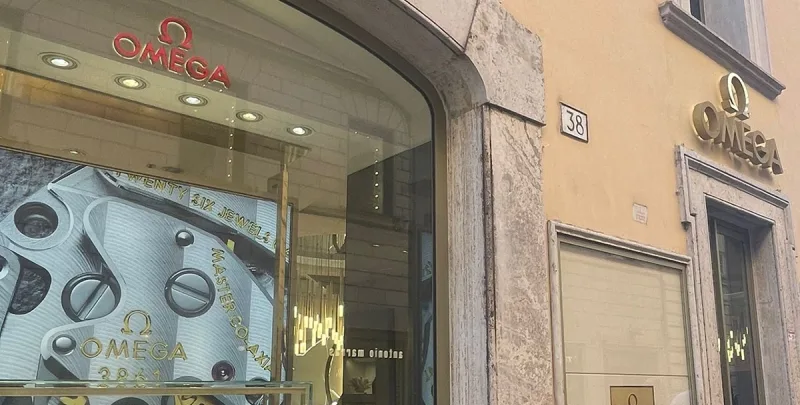Choosing a new watch, The all important movement
We know from our experience of insuring watches that when it comes to deciding on a purchase, people tend to favour a good brand name and the atheistic qualities of the actual watch. In our opinion, the most important feature, the movement, is often over looked (probably because, unless you have a skeleton watch with a see through back, you cannot see it).
The movement is basically the mechanics of the watch that tells the time and in essence, the better quality the movement the more expensive the watch will be.
If you are sensible and resist the temptation to remove the back of your watch, the movement is probably something you will never see, the heart of the watch is usually cared for and regulated by a jeweller using professional tools and equipment, this is especially essential if your watch is water- proof as if the seals are tampered with, the watch can easily loose its water tightness.
There are various types of movement available although in recent years, the numbers and variations have diminished. Here are some of the most popular;
Mechanical Movements
Mechanical watch movements are the oldest in existence and are still universally popular today although they are not as accurate as modern quartz ones and of course have many moving parts which can go wrong and will need servicing. (That said and in fairness most are extremely reliable) The most important feature of a mechanical watch is the main spring. By turning the crown, the spring is wound and the watch will tell the time. Tension from the spring is released via a series of cogs which powers the movement. A mechanical watch is usually wound once a day.
Mechanical watches can be inaccurate but you can adjust them by altering the regulator (the regulator is a lever marked “s” for “slow” and “f” for “fast”, you can do this yourself or ask your jeweller. As mentioned above, we suggest that any adjustments to a movement are carried out by a jeweller. Failing this, if you know the level that the watch gains or loses time each day, you can simply re- set it every morning.
After a period of time, a mechanical watch will need to be serviced which will include cleaning and oiling to ensure it continues to run smoothly. Because of this servicing requirement, there are on-going costs associated with owning a watch of this type; however that is compensated by the fact that a good quality mechanical watch serviced correctly can last indefinitely and many actually appreciate in value over time.
Self-Winding or Automatic
A self-winding or automatic watch is a mechanical watch but with the principle difference that it will wind itself when being worn. Inside the body of the watch the movement contains a weight known as a rotor. This rotor is semi-circular in shape and is mounted on a pivot. As the wearer moves, the rotor spins, back and forth and this movement transfers energy via a serious of gears which winds the main spring. Automatic watches will normally run for a period of two days without being worn after which time they will have to be restarted by winding using the crown. Some expensive automatic watches have a “power reserve” meter incorporated in to the dial showing how much power is stored within the watch.
Kinetic
A Kinetic movement is a form of automatic watch movement that instead of wrist movement charging a main spring, energy is passed to a capacitor which in turn powers the quartz crystal. Kinetic watches have less moving parts, thus servicing is not usually an issue , they require no battery change and are because of the quartz technology are more accurate than traditional automatic watches, they are usually a good deal cheaper as well.
Mecha Quartz
This type of movement is not overly common but you may come across it in some high end Swiss watches (IWC in particular). This is a hybrid movement and derives its name from the fact that it has two motors, both mechanical and quartz. The base motor of the watch is powered by quartz (battery operated) this powers; the hour, minutes and seconds hand along with the date. The mechanical motor powers the chronograph functions. This movement seems to present the best of both worlds; the watch will have the dependable quartz accuracy with chronograph functions that can be noticeably quicker during resetting. Because of the deployment of quartz technology, mecha quartz watches are able to be much thinner that their fully automatic counterparts.
Quartz
Quartz watch movements are a relatively new concept and are renowned for their accuracy and low cost. Many premium watch makers now produce quartz movements as well as their traditional offerings. The power to a quartz watch comes not from the winding of a mechanical spring but from a tiny lithium battery which will normally supply enough power for several years before needing changing.
The quartz crystal in the watch oscillates at a very high frequency and this oscillation provides the power for the motor at a constant, accurate rate. Quartz watch differ from mechanical ones in that the second hand will “tick, tick” around the watch face, whereas a mechanical watches second hand will sweep in a far more graceful manner. Quartz watches offer highly accurate time keeping at almost “disposable” prices.
If you require a Watch insurance quotation, please make contact with our office, we will be delighted to assist you.


























